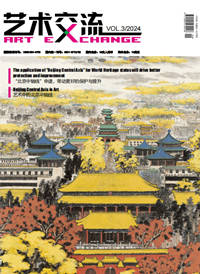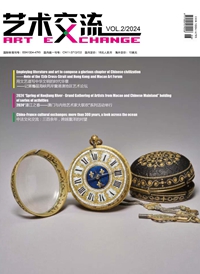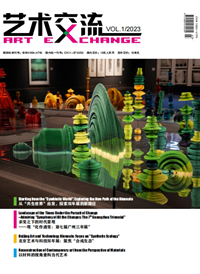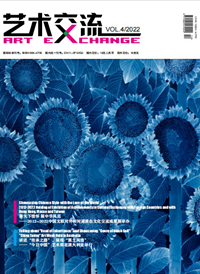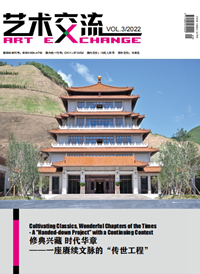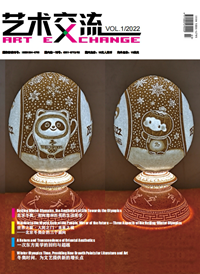Blossoming in the Flourishing Age
About Exhibition of Flower and Bird
Paintings Collected by NAMOC
The Chinese culture has a high degree of generalization for all things, for example, dividing Chinese painting into three categories: landscapes, figures, flowers and birds. Comparing with landscapes and figures, the flowers and birds are the best category reflecting the vivid relationship between human being, animals and plants. No matter flowers, birds, insects, fruits or fishes, they are all included in this section, reflecting the harmonious nature and development balance of relevance and ecology, namely the kingdom of flowers, paradise of animals, showcasing a vibrant scene.
The Chinese flower and bird paintings have witnessed a high degree of development since the Song Dynasty. Whether it is to take the artful or freehand brushwork, both birds and flowers paintings seek the truth, not only to draw a regular pattern, but also the common sense. Therefore, the academy-oriented flower and bird artful paintings and literati freehand flower and bird painting of the Song Dynasty have both received a lofty position in the history of art, worshiped by the later generations. The essence in painting, the wonder in status, feelings in experience and the charm in depiction, in particular, are comprehensively showcased, demonstrating the unique perspective of nature and special way of expressing emotions of the Chinese people. The flowers and lively fragrances in the meantime
open up a brand-new realm and interest in such paintings. The integration of thinking of literati paintings, including that of SU Shi, has injected new charms into Four Great Figures flower and bird paintings. The artists not only link people's aesthetic concepts with the natural characteristics of animals and plants wisely, but also combine their individual characteristics with the symbolic and comparative approaches of human beings, borrowing issues to compare an individual, expressing emotion, showing up their hearts and inspirations and greatly opening up the image and meaning of flowers and birds painting.During this period, the themes of plants represented by plum, orchid, bamboo, chrysanthemum, pine and cypress and those themes of animals represented by crane, wild goose, horse, cattle, ape, fish and others have been deeply showcased in a concentrated manner, allowing the arts
and cultural forms depicting ambitions from different categories of the Chinese people from ancient time to show a glittering and brilliant prosperity. The blossom of ink and color shows the wonderful pride, as if it were singing of nature and elves, whether the flutter flowers or a sweet aroma, refreshing people’s heart.
Due to the government's guidance and civil needs in the Song Dynasty, it has established the interaction between the royal family, literati and the ordinary people concerning birds and flowers paintings and formed the early flower and bird painting markets, creating a brand-new tradition of a new artistic theme and expression of auspicious festivities and entertainments.Indescribable languages of flowers, joyous thoughts, brilliant feelings and poetic expressions… They have all cast far-reaching impact on the future generations.
In the Yuan Dynasty, with the change of cultural policies during the reign, the literati and scholars carried the symbolic functions of flower and bird paintings further, pushing the development of freehand and small freehand art performance and cultural functions to a new level, highlighting literati morale, even a flower, a leaf, a stone ora handful of soil arouses people’s contemplation and noble stance.
In the Ming and Qing Dynasties, with the growth of the public class and the prosperity of business and industry, the art and market, culture and life were highly integrated, teams of occupational painters grew dramatically. Artists living by flower and bird paintings constantly made literati arts, aristocratic arts and civil arts to learn and impact each other with vivid content, popular and refined languages, favorable scenes, charming effect and lovely forms, creating a number of great masters of flower and bird painting. Among them, the most notable are the flower and bird painters represented by XU Wei and ZHU Da, integrating their national belief and thoughts into paintings with much innovation, making the influence of such paintings break through the field of painting and making it one of the most prominent cultural phenomenon. Whether the miscellaneous flowers, cold waterfowl, ruins of lotus, a residual rock, or chic and easy freehand brushwork, they all borrowed the flower and bird painting, a special carrier suitable for lyricism to develop the freehand way of Chinese painting into an unprecedented situation, influencing the freehand way and language structure of portrait painting and landscape painting and making the freehandness one of the most outstanding features of Chinese painting.
Since the modern times, the flower and bird painting has witnessed marvelous strides. The artists represented by REN Yi, WU Changshuo, QI Baishi, CHEN Shizeng, YU Feian, XU Beihong, CHEN Zhifo, LIU Haisu, PAN Tianshou, LIN Fengmian and others have improved with great innovation, following the tradition, combining the Chinese and Western styles or adhering to the tradition with changes, constantly leading the subtle transformation of the composition, color, brush and ink, and connotations of flower and bird painting and realizing new development and deepening of its lyricism, expressiveness, symbolism and culture. It is on these bases that the contemporary artists also learn from the folk art, prehistoric art and salute to the Western contemporary art. Refining the content, developing the themes, exploring the rules, search for colors, studying special technique, blurring the boundaries, triggering new situations and boldly promoting the cross-cutting combination of diverse category, material, rules and artistic conception of paintings, they have delved into all aspects of subject of flower and bird painting. The unremitting exploration of a new generation of flower and bird painters makes such painting of modern times blossom in full bloom and contests.
Blossoming in the new flourishing age, the "Exhibition of Flower and Bird Paintings Collected by NAMOC "hosted by National Art Museum of China" has been held from 25, January to 4, March in Beijing. The exhibition, not only bringing together more than 100 pieces of bird and flower paintings collected by the NMOC, but also focusing on the development of bird and flower paintings since the Song and Yuan Dynasties in China through specific artworks, is divided into three parts: the first part displays the flower and bird paintings in Song, Yuan, Ming and Qing Dynasties; the second part displays the modern flower and bird paintings; the third part displays the contemporary bird and flower paintings. Green flower and grass, verdant trees, gurgling water, hard stones, soaring birds, running animals, touring fish and singing insects, the aesthetic content of traditional Chinese traditions presented in these paintings is in line with contemporary ecological harmony theory, highlighting the path of nature.




